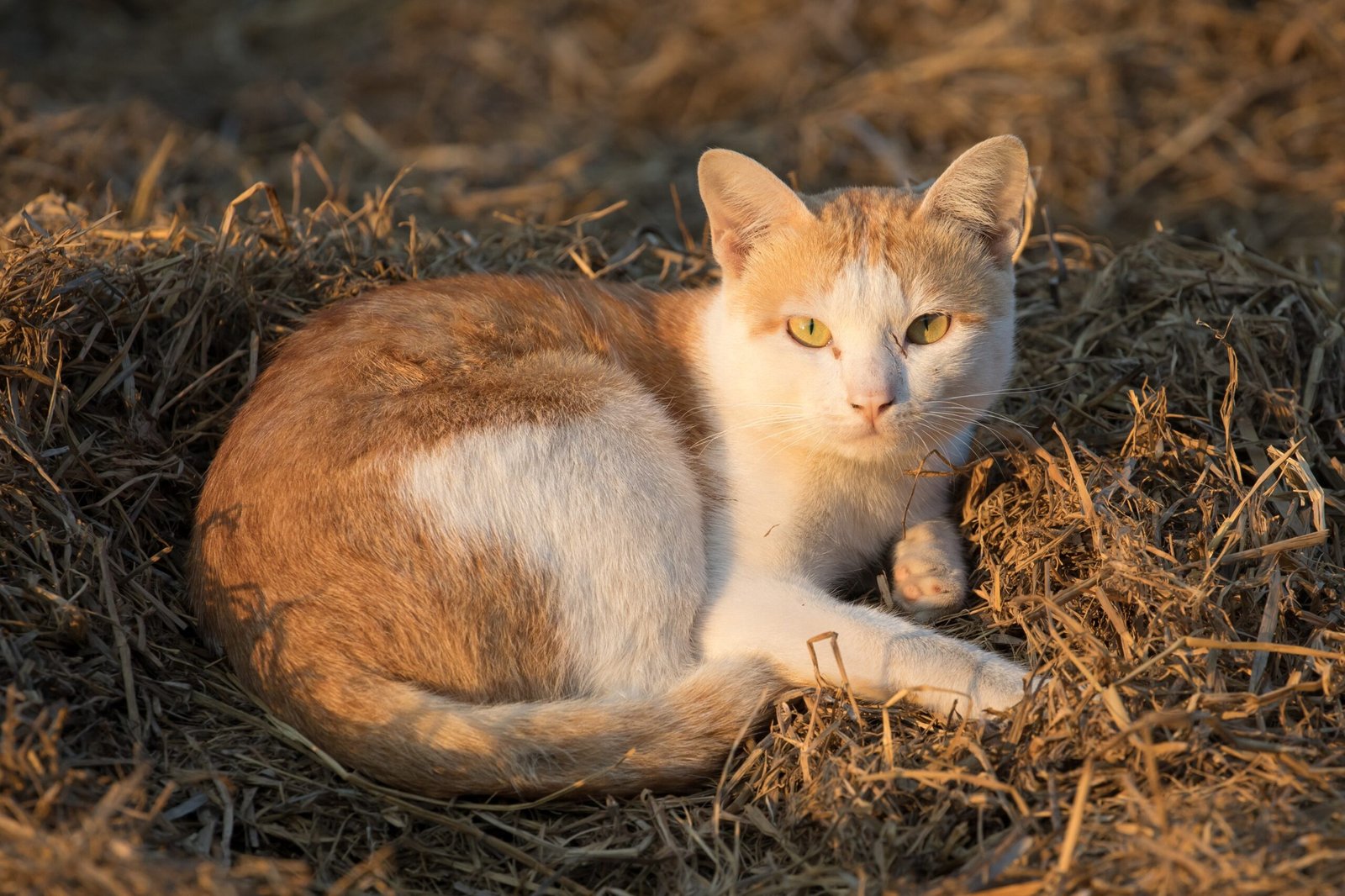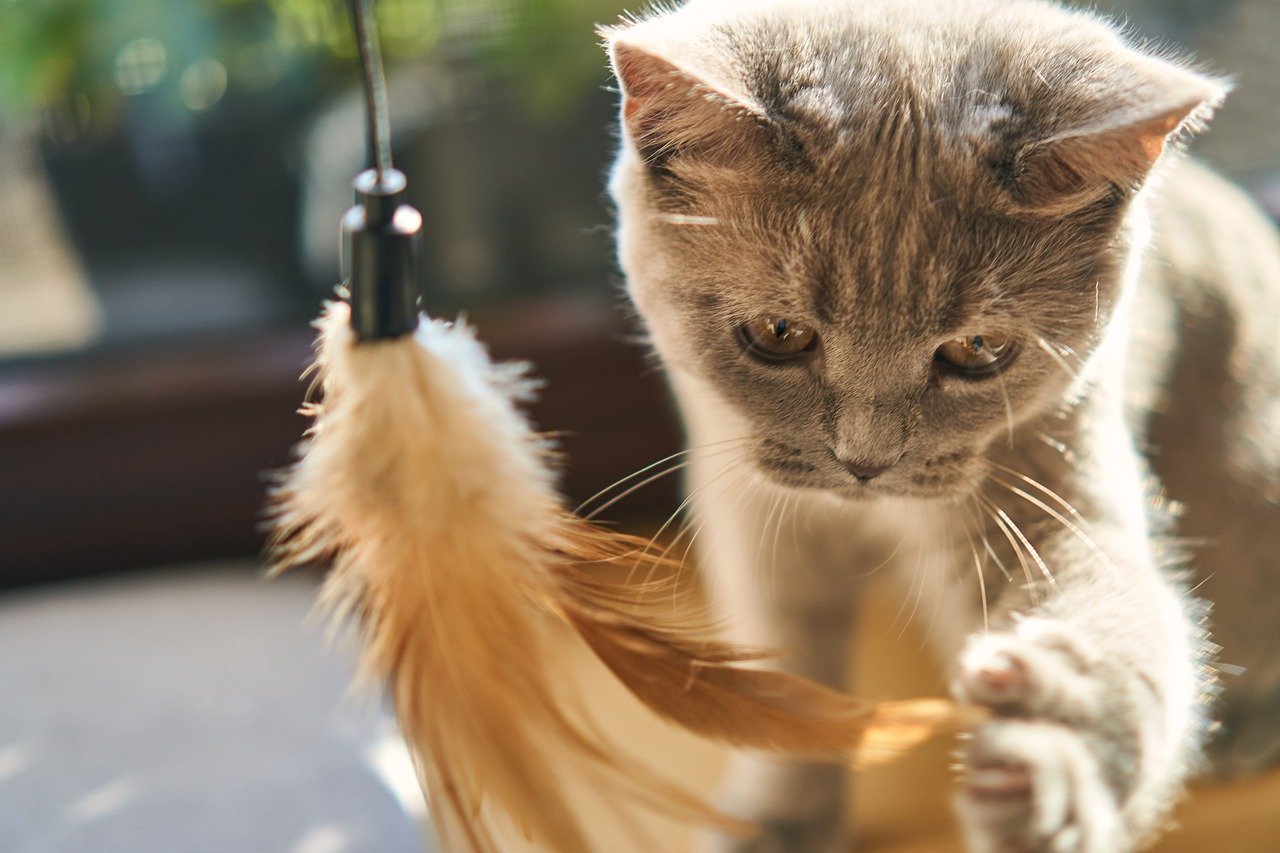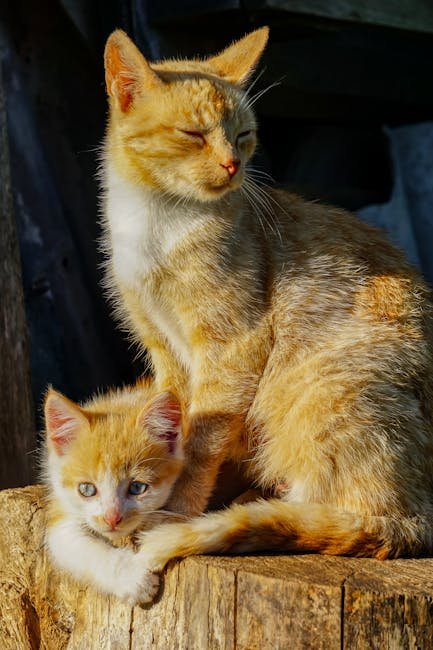Bringing a new baby into your home is a joyous occasion, but it can also be a challenging time for your feline friend. Cats, known for their territorial nature and routine-oriented lives, might find this change unsettling. To ensure a smooth transition for your pet, it’s important to understand their needs and provide the right environment. Here are some tips on how to help your cat adjust to the new family member.
Understanding Your Cat’s Perspective
Cats are creatures of habit, and any change in their environment can cause stress. Imagine if you suddenly found yourself in a world where everything familiar was different. That’s how your cat might feel when a new baby arrives. They may not understand why there’s a new little human taking up space and attention. Recognizing this can help you empathize with your cat and prepare them for the changes ahead.
Preparing Before the Baby Arrives
Start preparing your cat for the new addition well before the baby arrives. Gradually introduce them to new baby items like cribs, toys, and blankets. Allow them to explore these items at their own pace. This helps familiarize them with new scents and objects, making the transition smoother when the baby comes home. It’s like easing into a new pair of shoes – the more familiar, the more comfortable.
Creating a Safe Space for Your Cat

Ensure your cat has a quiet, safe space to retreat to whenever they feel overwhelmed. This could be a separate room or a cozy corner with their bed, toys, and litter box. Think of it as their personal sanctuary, where they can escape the hustle and bustle of baby activities. Having a designated area reassures them that they still have a place to call their own.
Maintaining a Routine
Cats thrive on routine, and maintaining a consistent schedule can help them feel secure. Try to stick to regular feeding times and play sessions, even amidst the chaos of caring for a newborn. It’s like keeping a favorite TV show on air despite a change in network programming – it offers comfort and predictability in a time of change.
Introducing Baby Sounds Gradually
Before the baby arrives, play recordings of baby sounds such as crying, cooing, and laughter at a low volume. Gradually increase the volume over time. This helps your cat get used to the new sounds they’ll encounter, reducing shock and anxiety. It’s akin to getting used to a new background noise in your neighborhood – over time, it becomes part of the environment.
Positive Reinforcement and Rewards
Encourage positive behavior by rewarding your cat with treats, affection, and praise when they react calmly to the baby or baby-related items. This positive reinforcement helps them associate the baby with positive experiences. It’s like getting a gold star at school for good behavior – it builds a positive connection.
Supervised Interactions

When the baby arrives, allow your cat to observe and sniff them under supervision. This helps satisfy their curiosity while ensuring safety for both the cat and the baby. Think of it as introducing a new friend – cautious but friendly interactions can lead to a harmonious relationship.
Monitoring Behavior Changes
Keep an eye on any changes in your cat’s behavior, such as aggression, withdrawal, or changes in eating or litter habits. These could indicate stress or discomfort. It’s essential to address these issues promptly, much like tending to a garden before weeds take over.
Providing Extra Attention

With a new baby, it’s easy to get caught up in the whirlwind of parenting, but your cat still needs your attention. Spend quality time with them daily, engaging in play or simply enjoying their company. This reassures them of their place in the family, much like spending time with an old friend to maintain a strong bond.
Using Calming Products
Consider using calming products like pheromone diffusers or sprays to help ease your cat’s anxiety. These products mimic natural cat hormones and can create a calming environment. It’s similar to lighting a soothing candle after a long day – it helps set the mood for relaxation.
Seeking Veterinary Advice
If your cat continues to struggle with the new changes, consult your veterinarian. They can offer insights and recommendations tailored to your cat’s specific needs. Think of it as seeking expert advice when you’re unsure – professional guidance can make all the difference.
Encouraging Exploration
Allow your cat to explore the baby’s room and items when the baby is not present. This controlled exploration helps them adjust to the new scents and surroundings. It’s like familiarizing yourself with a new workspace before starting a new job – it eases the transition.
Keeping Baby Items Out of Reach

Ensure that baby items like diapers, wipes, and toys are stored out of your cat’s reach. This prevents any potential accidents or mishaps. Much like childproofing your home, it’s an essential step in ensuring safety for all household members.
Introducing New Scents

Before bringing the baby home, bring an item with the baby’s scent, like a blanket, for your cat to sniff. This pre-introduction helps them become accustomed to the baby’s scent. It’s akin to recognizing a familiar perfume – the scent becomes part of their world.
Addressing Territorial Behavior

Some cats may display territorial behavior with a new baby in the house. Address this by providing additional resources like extra litter boxes or feeding stations. It’s like adding more chairs at a dinner table – everyone has their space, reducing competition and stress.
Teaching Gentle Interactions

As your baby grows, teach them to interact gently with your cat. This ensures mutual respect and safety as both your child and cat cohabit. Think of it as teaching manners at a social gathering – everyone benefits from a little etiquette.
Maintaining Cleanliness

A clean environment is crucial for both your baby’s and cat’s health. Regularly clean litter boxes and ensure your home is free from pet hair and allergens. It’s like keeping a tidy kitchen – cleanliness promotes a healthy, happy home.
Building a Strong Bond

Encourage a bond between your baby and cat by involving your child in gentle interactions as they grow. This fosters a friendship that can last a lifetime. It’s like watching a friendship blossom – with time and patience, it becomes something beautiful.
Being Patient and Adjusting

Remember, patience is key. Every cat is different, and some may take longer to adjust than others. Be prepared to make adjustments and offer support as needed. It’s like learning a new skill – practice and patience lead to success.
Celebrating Small Victories

Celebrate small victories, such as your cat showing curiosity rather than fear towards the baby. These moments are milestones in the journey of adjustment. It’s like celebrating a small win in a sports game – every step forward is progress.
Bringing a new baby into your home can be a challenging time for your cat, but with understanding and preparation, it’s possible to create a harmonious environment for both your feline friend and your new addition. By taking these steps, you’re ensuring a smooth transition and a loving home for everyone involved.
Hi, I’m Bola, a passionate writer and creative strategist with a knack for crafting compelling content that educates, inspires, and connects. Over the years, I’ve honed my skills across various writing fields, including content creation, copywriting, online course development, and video scriptwriting.
When I’m not at my desk, you’ll find me exploring new ideas, reading books, or brainstorming creative ways to solve challenges. I believe that words have the power to transform, and I’m here to help you leverage that power for success.
Thanks for stopping by, Keep coming to this website to checkout new articles form me. You’d always love it!






